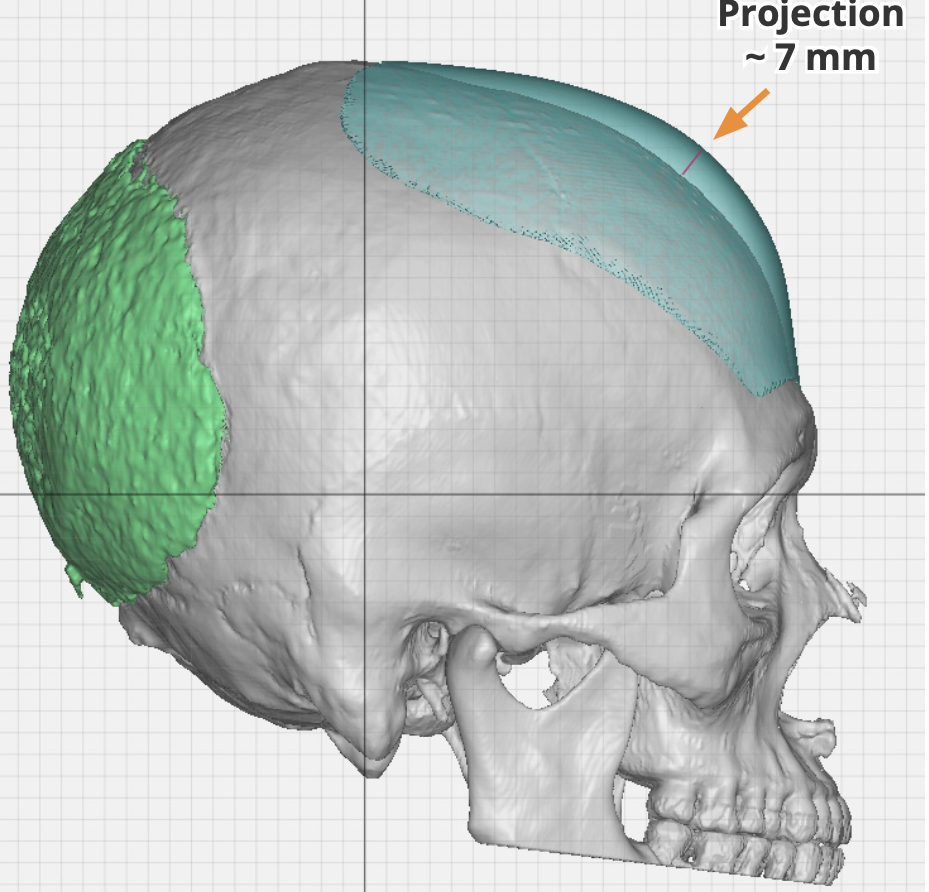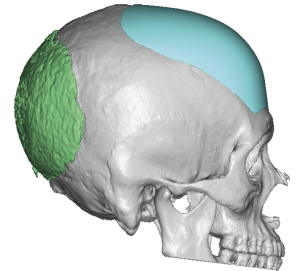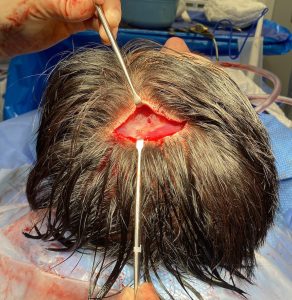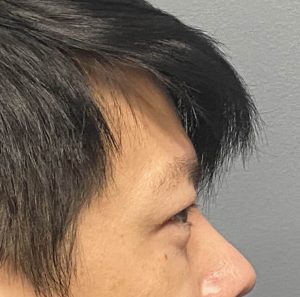Background: The forehead is the most visible part of the face and skull because of its large non-hair bearing surface area. While its coverage area is broad it does not have a flat shape nor does it have a completely vertical slope. In men the forehead usually has a slight backward angulation particularly at the middle to upper forehead as it ascends onto the top of the head. This is contrasted to that of a female whose forehead is rounder and more vertical in slope.
But despite the gender of the forehead it is an important element in the profile of the head, adding length and shape to its front half. As a result one reason a patient seeks forehead augmentation is to improve the length of a short head which is congenital in origin. This is not an uncommon request in some Asian patients who are more prone to a shortened front to back skull length.
While forehead augmentation is performed by a variety of methods (injectable fillers and fat, standard forehead implants) the permanent and most assured forehead shape change is done using a custom implant design. Such custom forehead implants can be placed secondarily after a back of the head augmentation or at the same time as a back of head implant augmentation.
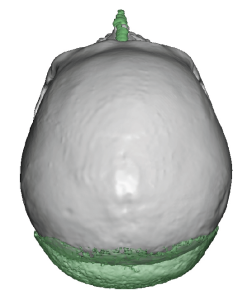

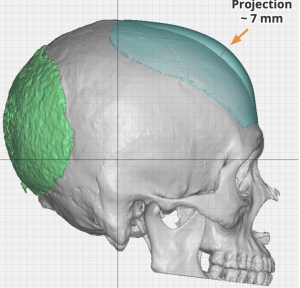

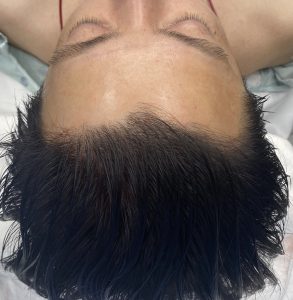
When seen the next day of drain removal the degree of improvement in the profile shape of the head could similarly be appreciated.
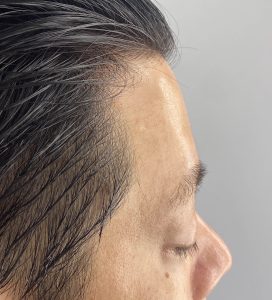
In head shapes that have a congenital short skull length with a flattened back of the head and lack of anterior forehead projection, custom implant augmentations on both ends can provide an improved head shape. Whether placed together or done in two stages, as in this case, the key consideration in the implant designs is how much projection and volume each implant provides with consideration of the scalp stretch to accommodate them. The largest of the two implant augmentations is the back of the head where the greater projection is needed. Such implants can easily approach 150ccs or greater in volume which in thicker scalps with more stretch is not a problem for successful placement. The custom forehead implant is always smaller in projection and thickness as this is a less severe slope correction.
Key Points:
1) Male forehead augmentations are typically done to improve am excessive backward forehead slope with pseudo brow ptosis.
2) In certain head shapes that have decreased front to back length forehead augmentation is the anterior half of the solution.
3) Custom forehead implant augmentation can be done with back of the head augmentation or done before or after.
4) Forehead augmentation requires scalp stretch which may be more limited if a prior back of the head augmentation has been done.
Dr. Barry Eppley
World-Renowned Plastic Surgeon

